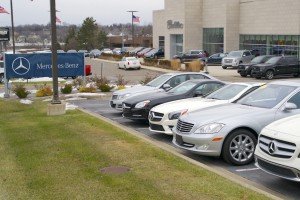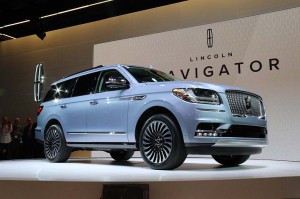For the second consecutive year, the new vehicle retail sales pace in January is expected to drop from year-ago levels, according to forecasts from J.D. Power, LMC Automotive and Edmunds.
The total seasonally adjusted annualized rate for January is expected to be 17.1 million units, with retail sales falling by 150,000 vehicles from a year ago, according to J.D. Power.
“Coming off a strong sales period to close out 2017, a slower start to the year was anticipated,” said Thomas King, senior vice president of the Data and Analytics Division at J.D. Power. “After the industry’s emphasis on the sell-down of old model-year vehicles in December, January is a transition month as manufacturers shift focus towards 2018 model-year vehicles.”
King added through mid-January, 2018 model-year vehicles accounted for 73% of retail sales, an increase of more than 11 percentage points from December.
(Auto ownership may have passed its peak. Click Herefor the story.)
Average transaction prices so far in January have risen to $32,169, the highest level ever for the month of January and the total value of new vehicles purchased will increase by just over $1 billion from last year’s level, King said.
“The challenge in 2018 will be maintaining incentive discipline, coming off a year when incentive spending per unit reached the highest level ever recorded,” King said. Average incentive spending through the first two weeks of January is $3,733, up $94 from the same period last year and on track to set a record high to start the year.
Edmunds, a leading car shopping and information platform, forecasts that the January SAAR will reach 16.7 million. This reflects a 29.8% decrease in sales from December 2017 and a 1.4% decrease from January 2017.
“In January, automakers are expected to pull the reins in on the more generous incentive programs that we saw at the end of 2017,” said Jessica Caldwell, executive director of industry analysis at Edmunds.
(Click Here for more about automaker concerns for 2018 sales after a slow December.)
“However, it’s typical to see a slowdown at dealerships in January following the high-selling holiday months. This isn’t necessarily a solid indicator of the direction that the year is headed in terms of overall sales.”
Sluggish January sales are also expected as a result of severe winter weather in many parts of the country.
“The bomb cyclone that tore through the East Coast at the beginning of the month certainly didn’t help an already slower sales month,” said Caldwell.
Jeff Schuster, senior vice president of forecast at LMC automotive, noted while the negotiations on the North American Free Trade Agreement are something of a wild card, the outlook for 2018 is upbeat.
(New vehicle sales sputtered in December. To see why, Click Here.)
“On the heels of a strong close in 2017 to 17.2 million units, optimism for a solid 2018 seems to be growing. Most variables are aligned favorably, with the majority of that positive weight being carried by an expected boost in the economy. The tax cut is expected to help drive the economy toward the 3% growth level, which we haven’t seen since 2005,” Schuster said.


